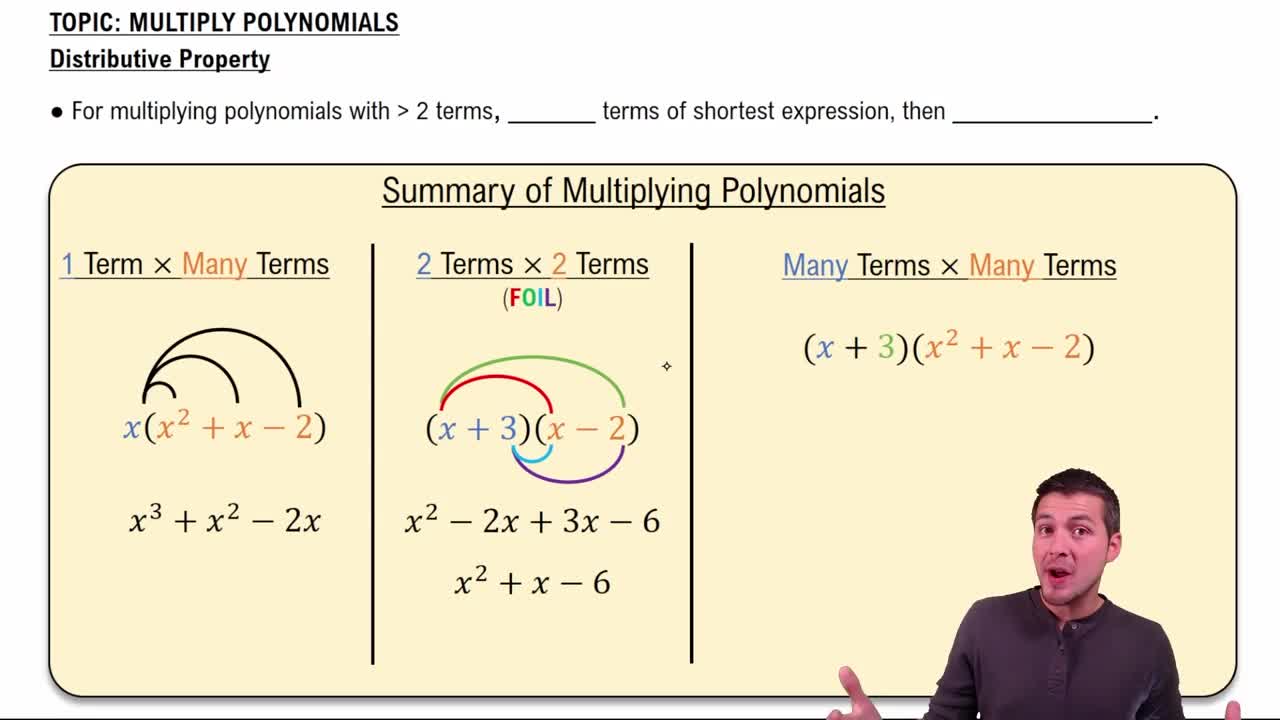Here are the essential concepts you must grasp in order to answer the question correctly.
Order of Operations
The order of operations is a set of rules that dictates the sequence in which mathematical operations should be performed to ensure consistent results. The acronym PEMDAS (Parentheses, Exponents, Multiplication and Division, Addition and Subtraction) helps remember this order. In the given expression, operations within parentheses must be simplified first, followed by multiplication and subtraction.
Recommended video:
Performing Row Operations on Matrices
Distributive Property
The distributive property states that a(b + c) = ab + ac, allowing us to multiply a single term by each term within a set of parentheses. This property is essential for simplifying expressions that involve multiplication of a term with a sum or difference. In the expression provided, applying the distributive property will help simplify the term 4[3 - (4y - 5)].
Recommended video:
Multiply Polynomials Using the Distributive Property
Combining Like Terms
Combining like terms involves simplifying expressions by adding or subtracting terms that have the same variable raised to the same power. This process is crucial for reducing expressions to their simplest form. After applying the order of operations and the distributive property in the given expression, combining like terms will help finalize the simplification.
Recommended video:
 Verified step by step guidance
Verified step by step guidance Verified video answer for a similar problem:
Verified video answer for a similar problem:

